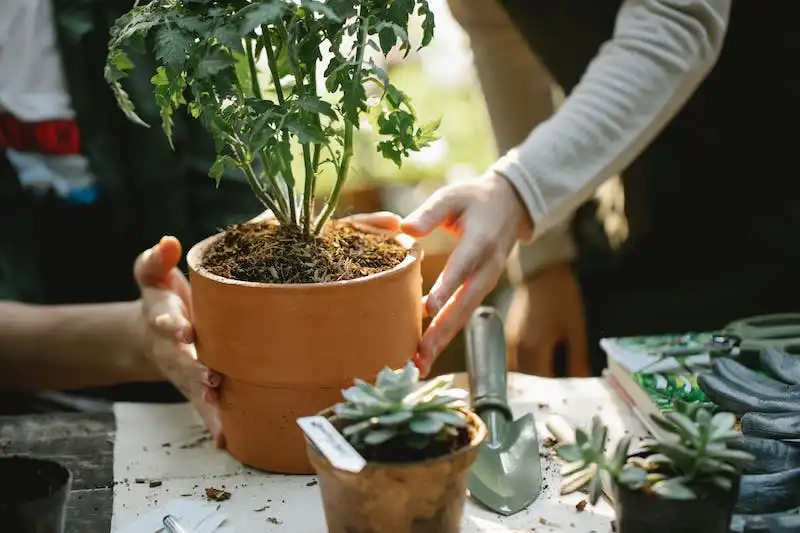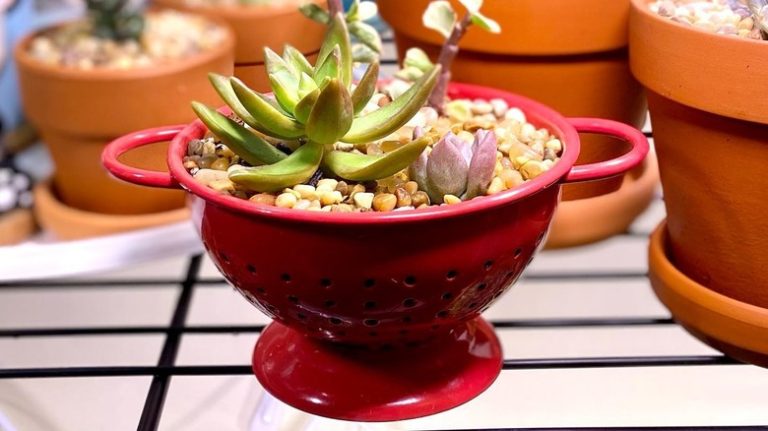Monkshood, also known as aconitum, is a stunning flower with purple-blue or purple petals that are shaped like a monk’s hood. These wildflowers are often found in mountainous regions and are believed to have originated near wolves. Monkshood is a fragile species, and caution must be taken when growing them in your garden, as they can be poisonous.
Although monkshood is beautiful, it is important to be aware of its toxic effects. The entire plant, including the leaves and flowers, contains a poison that can cause significant health problems. In fact, monkshood is so poisonous that it has been used in the past to poison wolves. If you are growing monkshood in your garden, please follow the necessary precautions and keep it out of reach of children and pets.
The poison found in monkshood is called aconitine, and it can be very dangerous if ingested. Even a small amount can cause severe pain and other physical symptoms. If you think you or someone has been poisoned by monkshood, it is crucial to seek medical help immediately. Do not wait for symptoms to appear. Prevention is the best way to avoid the effects of this poison, so please be careful when growing monkshood.
Despite the warnings about its poison, monkshood is still an attractive addition to any garden. While they do require specific growing conditions, such as a rich, well-drained soil and a spot in full or partial shade, the effort is worth it. Some species of monkshood can reach a height of up to 4 feet and bloom from mid-summer to late fall. Their unique shape and vibrant colors make them a standout flower in any garden.
Monkshood has also been used for medicinal purposes in the past. Although it is not recommended to use monkshood without proper guidance and supervision, some historical uses include using it as a pain reliever, sedative, and even as a treatment for certain heart conditions. However, its use for medical purposes is now generally discouraged due to the potential risks involved.
In conclusion, monkshood is a beautiful but potentially dangerous wildflower. Its stunning purple-blue or purple petals shaped like a monk’s hood make it a captivating addition to any garden. However, it is essential to remember the warnings about its poison and take the necessary precautions when growing it. Check with a health professional or do a thorough search for more information about monkshood and its uses before considering introducing it to your garden.
Aconitum napellus Monkshood A Purple Poison
Monkshood, also known as Aconitum napellus, is a flower that belongs to the genus Aconitum. It is a purple-blue flower that can be found in mountainous areas. Although its rich color and physical beauty make it a popular addition to many gardens, it is important to be aware of its poisonous nature.
The leaves and roots of monkshood contain a highly toxic substance called aconitine, which can be fatal if ingested. Even a small amount of the plant can cause severe health problems and, in some cases, death. The poison is so potent that it was historically used to poison the tips of arrows and spears during hunting.
When growing monkshood in your garden, it is essential to take precautions. The plant should be kept away from children and pets, as even the slightest contact with the leaves can lead to poisoning. It is also advisable to wear gloves and wash your hands thoroughly after handling the plant. If you suspect that you have been poisoned by monkshood, seek immediate medical attention.
Some gardening tips for the prevention of monkshood poisoning include:
- Plant it in a spot that is out of reach of children and pets.
- Always wear gloves when handling the plant.
- Do not consume or taste any part of the plant.
- If you have a vegetable garden, make sure to separate it from the monkshood plants.
It is important to note that monkshood is not the only plant in the Aconitum genus that contains poisonous compounds. Other species, such as Aconitum lycoctonum (wolfsbane), should also be handled with caution. When in doubt, it is better to err on the side of caution and avoid any contact with these plants.
In conclusion, Aconitum napellus, or monkshood, is a beautiful but deadly flower. Its purple-blue flowers may add beauty to your garden, but their toxic effects should not be underestimated. If you suspect any plant poisoning, it is always best to seek immediate medical attention. Please follow the above tips for prevention, and remember to stay safe in your garden!
The Full Story
Monkshood, also known as Aconitum, is a genus of wildflowers that are native to the mountainous regions of Europe and Asia. One of the most popular species in this genus is Aconitum napellus, commonly referred to as Monkshood.
Monkshood flowers are known for their stunning purple-blue hue and distinctive hood-shaped petals, which give them their name. However, behind their beauty lies a dark secret – these flowers are highly poisonous.
The toxicity of Monkshood plants is due to the presence of aconitine, a potent poison. Ingesting any part of the plant, such as the leaves or flowers, can have severe physical effects on the body, including pain and numbness. In some cases, it can even be fatal.
The uses of Monkshood in medicine and other applications date back centuries. In ancient times, it was thought to help with various health issues, and it was even claimed to have preventative properties. However, due to its extreme toxicity, its use is now highly limited and regulated.
While Monkshood is primarily known for its poison, it is still sought after by garden enthusiasts due to its unique and beautiful flowers. If you’re considering growing Monkshood in your garden, it’s important to follow some tips and warnings.
Spotting Monkshood
Monkshood plants typically grow to be about 2 to 4 feet tall and have deeply divided leaves. The flowers, which bloom in the summer and early autumn, usually grow in dense, elongated clusters.
Growing Monkshood
Monkshood is a fragile plant that requires a specific environment to thrive. It prefers rich, moist soil and partial shade, making it ideal for gardens in cooler climates. It’s important to note that the leaves and roots contain the highest concentration of poison, so handle the plant with care.
After the flowers have bloomed, it’s best to cut the stems back to ground level to prevent reseeding. This will also help to funnel energy back into the plant for future growth.
In the afternoon or on cloudy days, the flowers may appear closed or droopy. Don’t be too concerned though, as this is a natural response to conserve energy.
The Story of Monkshood
Monkshood gained popularity in the 19th century when it was used to poison wine. The toxic substance aconitine was extracted from the flowers and leaves, and then submitted into the wine. As a result, those who consumed the poisoned wine experienced severe physical effects. Some even died.
What happened after these poisonings is a major part of the story. It led to the discovery of a poison antidote, which was a huge breakthrough in medical history.
Despite the dangers associated with Monkshood, it continues to captivate many with its striking appearance. However, it’s important to always exercise caution and be aware of the potential risks when handling this enchanting flower.
Poisoned
Monkshood, also known as Aconitum, is a genus of wildflowers that includes several species which contain poison. The most well-known species within this genus is Aconitum napellus, commonly known as Monkshood.
The plant is native to mountainous regions and can be identified by its striking purple-blue flowers. The flowers are rich in color and have a unique shape, with helmet-like petals that give them a distinctive appearance. Although Monkshood is a popular garden flower, it is important to be aware of its poisonous properties.
The poison is found in the leaves, stems, and roots of the plant. It is believed that the poisoning occurs when a person comes into contact with the plant, either through ingestion or by touching it with their bare hands. The poison, known as aconite, can be very toxic and should be handled with extreme caution.
If you suspect that you have been poisoned by Monkshood, it’s important to seek medical help immediately. The symptoms of poisoning can vary, but may include nausea, vomiting, dizziness, and weakness. In extreme cases, the poison can cause paralysis or even death.
To prevent poisoning, it’s best to avoid touching or ingesting any part of the Monkshood plant. If you are growing Monkshood in your garden, make sure to keep it away from areas where children or pets may be able to reach it. Always follow all safety rules and guidelines when handling any potentially poisonous plants.
If you would like more information about Monkshood and its poisonous properties, please consult reliable sources such as Google or a local gardening center. Additionally, it is always a good idea to check the full description and warnings before planting any unfamiliar flowers in your garden.
Tips to help prevent poisoning:
- Avoid touching or ingesting any part of the Monkshood plant.
- Keep Monkshood plants away from areas accessible to children and pets.
- Always handle potentially poisonous plants with caution.
Submitted by:
Wildflowers – Monkshood




